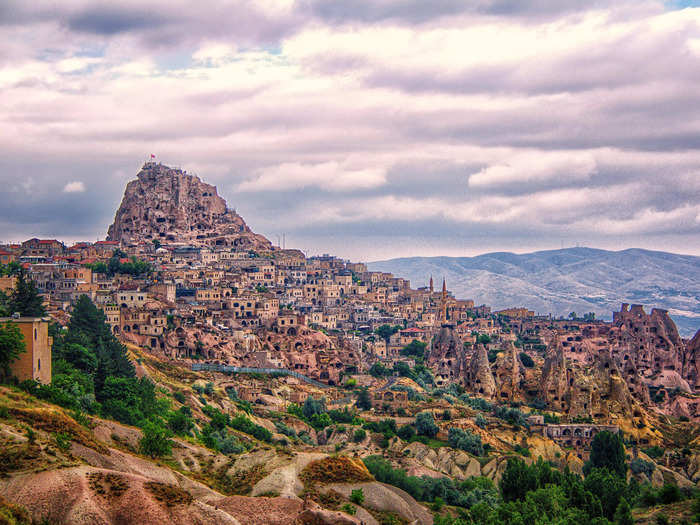
Derinkuyu, Turkey's underground city.Natalia Moroz/Getty Images
Stretching 280 feet below the Earth's surface in Cappadocia, Turkey, is a web of tunnels and cave-like dwellings that once housed 20,000 people.
The ancient city, Derinkuyu, lay abandoned for decades until, in the 1960s, a local man noticed his chickens were disappearing through a gap in his basement that had opened up during renovations, the BBC reported. After knocking down a wall, he found a tunnel — and accidentally rediscovered the sprawling, subterranean city.
Now part of a UNESCO World Heritage site, Derinkuyu is open to visitors, although they can only explore eight of its 18 levels. Here's a closer look at the remarkable city and its history.

Source: BBC


Source: BBC

Source: BBC

Source: Cappadocia Turkey, BBC

Source: BBC

Source: CNN

Source: BBC

Source: Cappadocia Turkey

Source: Cappadocia Turkey

Source: BBC

Source: BBC

Source: Cappadocia Turkey,
![A guide told BBC reporter Geena Truman that "life underground was probably very difficult. The residents relieved themselves in sealed clay jars, lived by torchlight, and disposed of dead bodies in [designated] areas." A guide told BBC reporter Geena Truman that "life underground was probably very difficult. The residents relieved themselves in sealed clay jars, lived by torchlight, and disposed of dead bodies in [designated] areas."](/thumb/msid-60085318,width-700,height-525/60085318.jpg)
Source: BBC

Source: UNESCO

 5 amazing features Apple iPhone users get with iOS
5 amazing features Apple iPhone users get with iOS
 Rupee trades in narrow range against US dollar in early trade
Rupee trades in narrow range against US dollar in early trade
 Cooling off in May: 10 cool destinations to visit in India this month
Cooling off in May: 10 cool destinations to visit in India this month

Copyright © 2024. Times Internet Limited. All rights reserved.For reprint rights. Times Syndication Service.